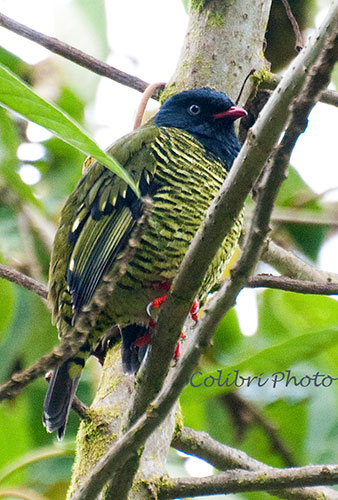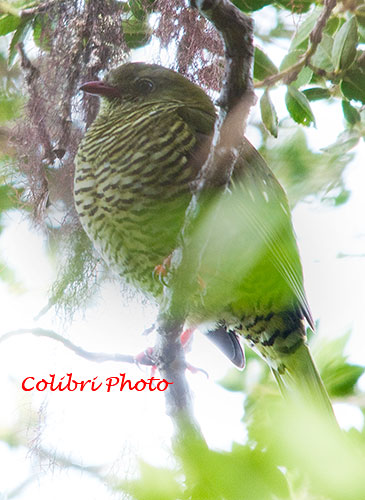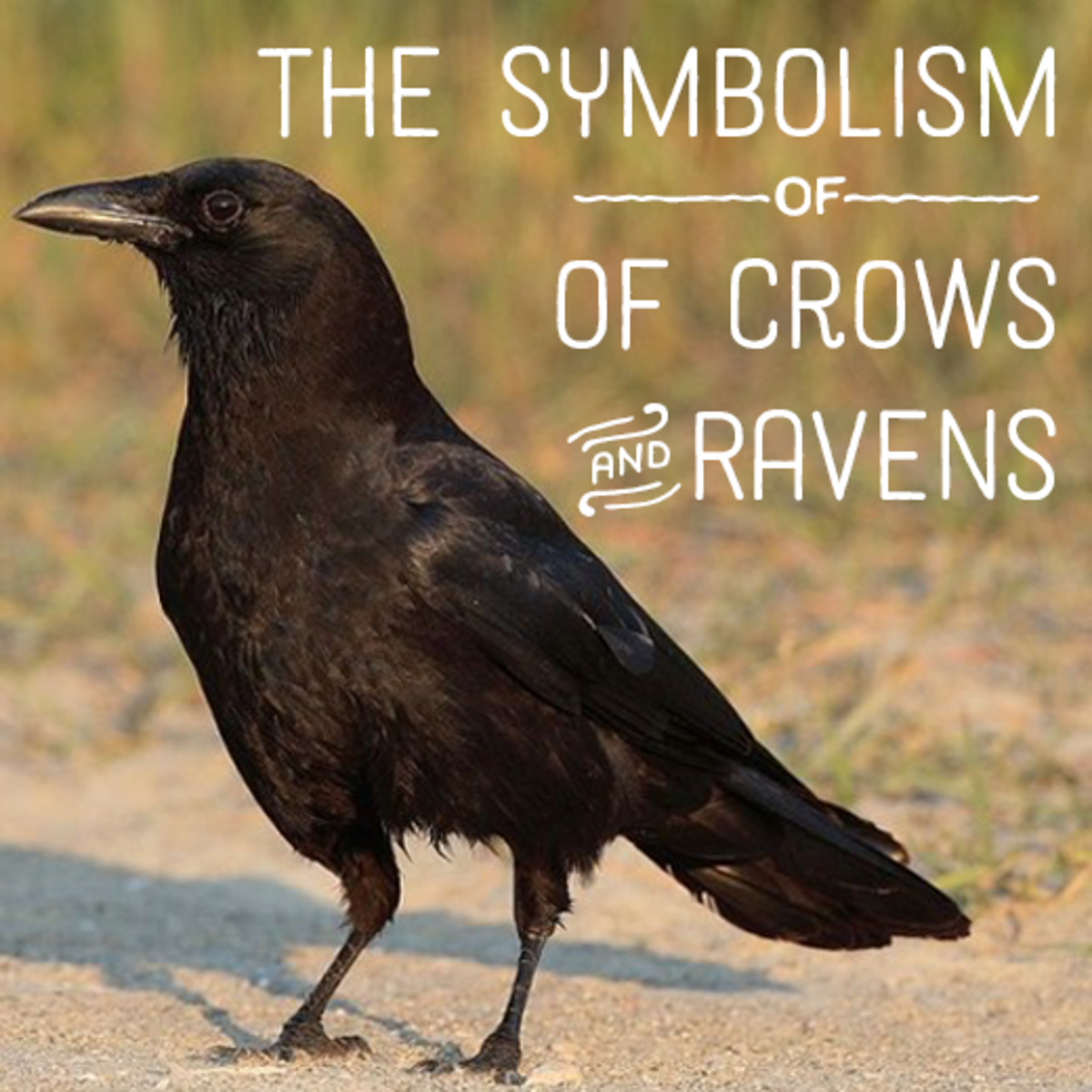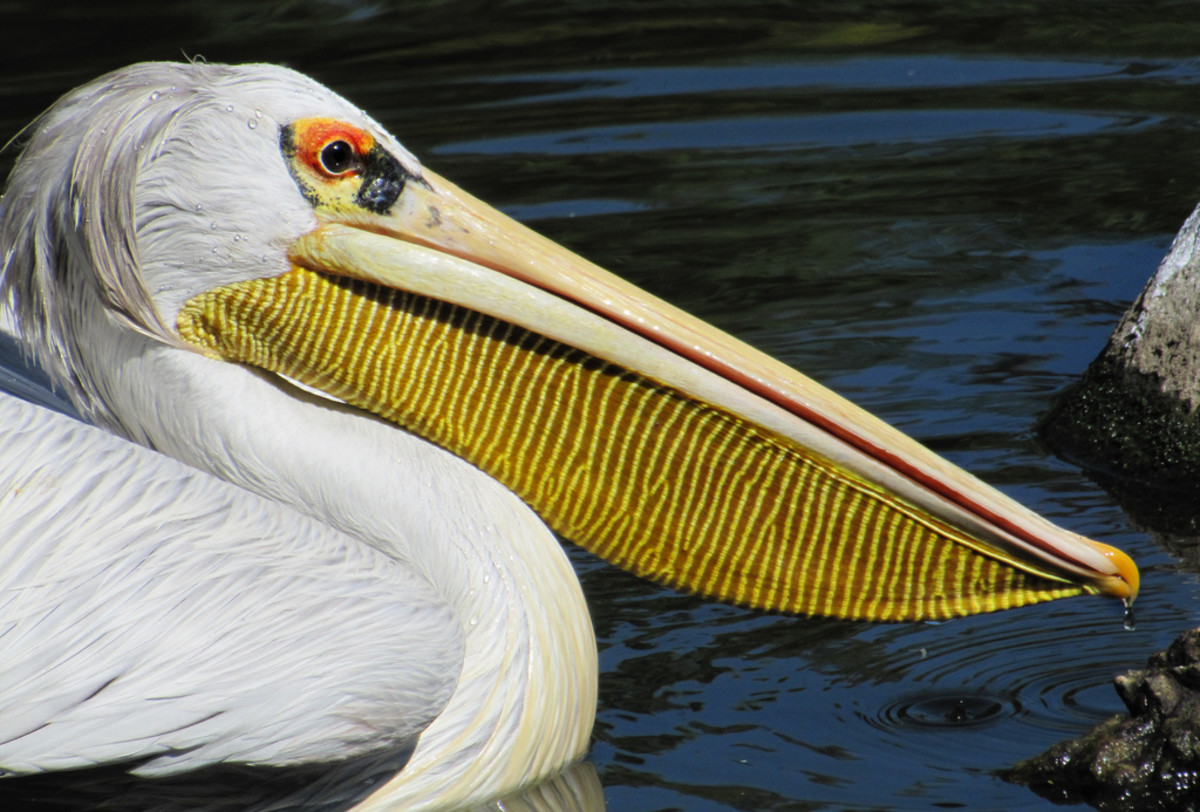Barred Fruiteater – Phantom of the Tropical Rainforest

Fruiteaters are a species of birds closely related to Tyrant Flycatchers and Manakins. They are endemic to the Neotropics and prefer the humid habitats of the tropical rainforests and cloud forests of the Andes Mountains. They are infrequently seen due to their nature and coloring, which makes them a delightful discovery for any naturalist.
Cotingas (Cotingidae)
The Barred Fruiteater is a member of the Cotinga family of birds that reside strictly in the Neotropics. This group includes some of the largest and most spectacular passerines, such as the Umbrellabirds and the Andean Cocks-of-the-Rock. They are often beautifully colored and bizarrely ornamented.
The Fruiteaters (Pipreola) are a stocky and short-tailed group found deep within the Andean forests, difficult to see and infrequently observed by the casual traveler. They are predominantly moss green, which allows them to blend in well with their surrounding, and their lethargic movements render them practically invisible. Only patients and stealth will yeild rewards in a quest to find these allusive birds.
Range
The Barred Fruiteater can be observed in the tropical rainforests and cloud forests on both slopes of the Andes Mountains. Ranging from western Venezuela to western Bolivia, it is an uncommon species, although it can be fairly common in localized areas.
Within Ecuador this beautiful bird can be located in the lower and middle growth at the borders and center of mountain forests. Preferring altitudes of 2,500 to 3,300 m (8,000 to 11,000 ft.) it can sometimes be seen locally, in small number, down to 2,250 m (7,400 ft.). It is partial to the more humid and moist environments on both slopes of the Andes.

Appearance
The Barred is the largest of the Fruiteaters measuring 23 cm (9 in) in length. If taken from its surrounding it would be quite colorful but blends in remarkably with its chosen habitat.
Its glossy black head, chest and throat can distinguish the male (pictured at top of article). The bright coral red beak and legs contrast with its overall moss green body color. The wings exhibit large pale yellow spots on the wing-coverts with a bright olive above. The eye of the Barred Fruiteater is a grayish olive although it can appear reddish in the more northern regions. The tail is short, olive in color with a black terminal band and narrow white tips. The breast and belly are uniformly striped horizontally with black and pale yellow.
The female (pictured at right) lacks the male’s black head and bib, its entire under parts being barred with black and pale yellow. There are no other similar species of this size and the Barred Fruiteater is the only Pipreola with the barring on its under parts.
Habits and Habitats
Fruiteaters, in general, are very lethargic birds. The Barred Fruiteater would win in a competition of inactivity. They will perch motionless for long periods of time rendering them camouflaged with their surrounding habitats. They prefer the rainforest and cloud forest areas of the higher altitudes, ranging much higher than other birds of their genus.
They are normally observed singly, although at times may be in pairs. Frequently they can be found in mixed flocks, but more often solitary. Several may appear together in fruiting trees as fruit is their main diet, sometimes supplemented with insects. Their nests are constructed of shallow cups of moss and both sexes can be viewed assisting in raising the young. They are extremely inconspicuous and seldom seen, although their high-pitched vocalization should reveal their position.
Where to Find the Barred Fruiteater in Ecuador
The Barred Fruiteater can be difficult to observe in the wild but there are some locations where you have a better chance of discovering this allusive species. Among those reserves are Huashapamba Forest Reserve, Guango Lodge & Reserve, Podocarpus-Cajanuma, San Isidro Reserve, Tapichalaca Reserve, and Yanacocha Reserve. Within these areas a cautious approach can pay off with big dividends.
Summary
Although the Barred Fruiteater is beautifully adorned in greens, yellows and blacks, it is seldom observed by the casual traveler due to its languid behavior and stealthy concealment within its natural habitat. However, the persistent birder can discover its inconspicuous perch with patients and persistence. For those who seek out this vibrant species there are bountiful visual rewards.
Other Articles by this Author
- Rio Silanche Bird Sanctuary - Tropical Rainforest Re...
Deforestation has become a bane for the many inhabitants of the tropical rainforests around the world. Although the exotic trees are a boon for the local farmers, their destruction in the name of... - Milpe Ecuador, an Oasis in the Rainforest
The Milpe Bird Sanctuary lies in the Los Bancos-Milpe rainforest valley in the western foothills of the Andes Mountains in Ecuador. It is one of the Mindo Cloudforest Foundation acquisitions dedicated to the preservation of the.. - Club-winged Manakin - Tropical Rainforest Casanova
The tropical rainforests of South America entice many naturalists to observe the abundant treasures that are hidden within its canopies. There is, however, one avian species that mesmerizes the...
Related Links
- The Birds of Ecuador
Photographs and articles on the birds of Ecuador - Discovering the Birds of Ecuador
Blog on the birding areas of Ecuador




